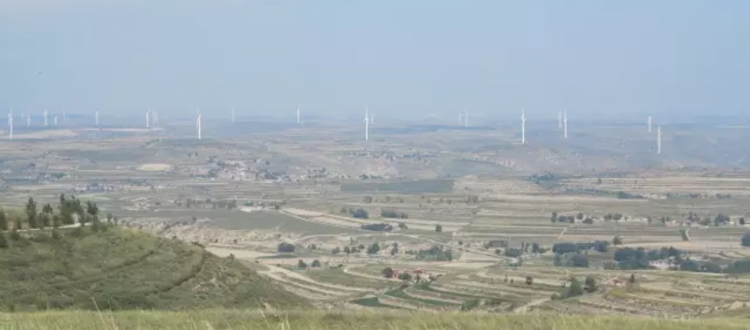Why China’s new Solar and Wind Power Certificates Matter
BEIJING (Mar. 31, 2017) – At the beginning of February 2017, China made a big step forward to make renewable energy integration more market-friendly, affordable and sustainable by introducing the Renewable Energy Certificate (REC) scheme.
According to Reuters, renewable energy already comprises about 11 percent of China’s energy consumption and at this time, producers granted heavy subsidies. To lower the subsidies and the need for them, the National Development Reform and Commission (NDRC) announced that beginning in July 2017 the country will launch a REC pilot scheme.



The NDRC offers the following framework: solar and wind producers will be issued tradable RECs, equivalent to 1 megawatt-hour of power, to demonstrate that ‘electricity has been generated through renewable energy sources.’
Private and state-owned businesses, along with other users of renewable energy, then have the opportunity to buy the certificates in exchange for an unspecified payment. After selling the certificate, the renewable energy producer will not receive a direct subsidy from the government.
But what exactly are RECs? How do they work? And why do they matter? Let’s hear from GEI Energy and Climate Change Program Officer Shengnian XU.
What RECs are and what they’re not.
Q: I’m getting a little confused with all this terminology. Are RECs anything like carbon trading?
A: Their aims are similar but with different approaches.
RECs simply incentivize carbon-neutral renewable energy by providing a subsidy to renewable energy electricity, while traditional carbon emissions trading programs use penalties and incentives to achieve established emission targets.
I think it will work together with the national carbon trading market in China to help China achieve its low carbon future. RECs aim to develop more electricity from renewable sources, while national carbon trading market constrains China’s carbon emission.
Q: Ok, that makes sense! And what about these LEED certifications. Is there any connection between LEED certification and REC?
A: Not really.
LEED certification is only about green buildings and aims to help buildings to be environmentally responsible and use resources efficiently.
On the other hand, the REC system aims to set up a trading market of renewable energy electricity, and helps to track the ownership of environmental and social benefits of the renewable energy. It may stimulate electric utilities to use renewable energy sources and encourage more corporations to use renewable energy electricity, but there’s no substantial connection to LEED certification.
The Major Players in the REC System
Q:
How does the national and local government benefit from RECs?
A: In China, the existing subsidies for renewable energy electricity come from the government, and are financed through an additional charge included in electricity fees. Now the Chinese government is introducing this REC trading system to help reduce their subsidy burden; effectively, the RECs are a means to replace government subsidies provided for renewable energy power.
The local government can also benefit from the RECs’ tradable scheme because the certificates are tied to a market mechanism, they can ease and smooth the process of East–West renewable energy trade. For example, businesses in Beijing can buy RECs from wind energy producers in Ningxia. The win-win scenario is that Beijing’s businesses become greener and greener and Ningxia’s power plants receive financial support while also lessening the government subsidies they receive.

Wind Plant in Ningxia – GEI 2016
Q: Businesses in China have been slow to adopt Corporate Social responsibility (CSR) practices. Do you think businesses will consider adopting RECs?
A: RECs may face the same situation as CSR practices in China, since purchasing RECs is a cost without a direct financial benefit. So far, RECs can help improve company branding and recognition with advantages like easy-purchase and easy-monitoring, compared to other green house gas (GHG) emission mitigation projects.
Companies purchasing RECs remains unclear. However, it is good to point out that this system makes it easier and possible for corporates looking for more sustainable operations. Moreover, NRDC also stated that after 2018, it is likely that China will start assessing the machine start renewable energy power quota as well as mandatory trading of the green power certificates.
The bottom line: Can RECs help China achieve a low-carbon future?
Q: Do other countries have a similar REC system and how will China use the system in the long term?
A: This green power certificate program is similar to the United States’ renewable energy certificates, which are also known as tradable renewable certificates. It will be a nationwide market, which is run and managed by China’s Renewable Energy Information Management Center.
I think it should be supplementary to and used as reinforcement of the upcoming national carbon trading market in China.
Q: Some say that RECs are not a strong enough sign of renewable energy integration and strategy. What do you think?
A: It does not seem strong enough by itself, but it will help China to achieve its strong renewable energy integration and strategy in the 13th Five-Year-Plan, in which electricity generated by non-fossil fuel increases from 27% (2015) to 31% (2020).
The road ahead for RECs…
GEI is now collaborating closely with Guangzhou Institute of Energy Conversion of the Chinese Academy of Sciences (GIEC-CAS) and US-based Center for Climate Strategies (CCS) to promote renewable energy in other developing countries and least developed countries(LDCs) and to build countries’ capacity to fulfill their INDC targets. First we will develop renewable energy analysis and planning tools, and conduct a pilot in Guangdong Province. Then GEI will work with GIEC-CAS to conduct renewable energy planning for other developing countries along China’s “One Belt, One Road” (OBOR).

